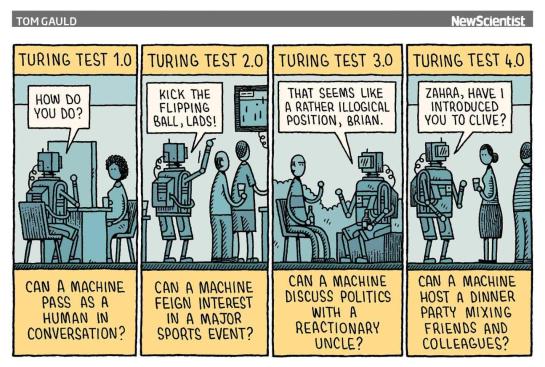From Asad Zaman Note that this is a very POSITIVIST idea — if the surface appearances match, that is all that matters. I quote a passage from Pearl: The Book of Why, which provides a gentle introduction to the newly developed field (largely by him) of causal inference via path diagrams: In 1950, Alan Turing asked what it would mean for a computer to think like a human. He suggested a practical test, which he called “the imitation game,” but every AI researcher since then has called it the “Turing test.” For all practical purposes, a computer could be called a thinking machine if an ordinary human, communicating with the computer by typewriter, could not tell whether he was talking with a human or a computer. Turing was very confident that this was within the realm of
Topics:
Asad Zaman considers the following as important: Uncategorized
This could be interesting, too:
tom writes The Ukraine war and Europe’s deepening march of folly
Stavros Mavroudeas writes CfP of Marxist Macroeconomic Modelling workgroup – 18th WAPE Forum, Istanbul August 6-8, 2025
Lars Pålsson Syll writes The pretence-of-knowledge syndrome
Dean Baker writes Crypto and Donald Trump’s strategic baseball card reserve
from Asad Zaman
Note that this is a very POSITIVIST idea —
if the surface appearances match, that is all that matters.

I quote a passage from Pearl: The Book of Why, which provides a gentle introduction to the newly developed field (largely by him) of causal inference via path diagrams:
In 1950, Alan Turing asked what it would mean for a computer to think like a human. He suggested a practical test, which he called “the imitation game,” but every AI researcher since then has called it the “Turing test.” For all practical purposes, a computer could be called a thinking machine if an ordinary human, communicating with the computer by typewriter, could not tell whether he was talking with a human or a computer. Turing was very confident that this was within the realm of feasibility. “I believe that in about fifty years’ time . . . . read more
